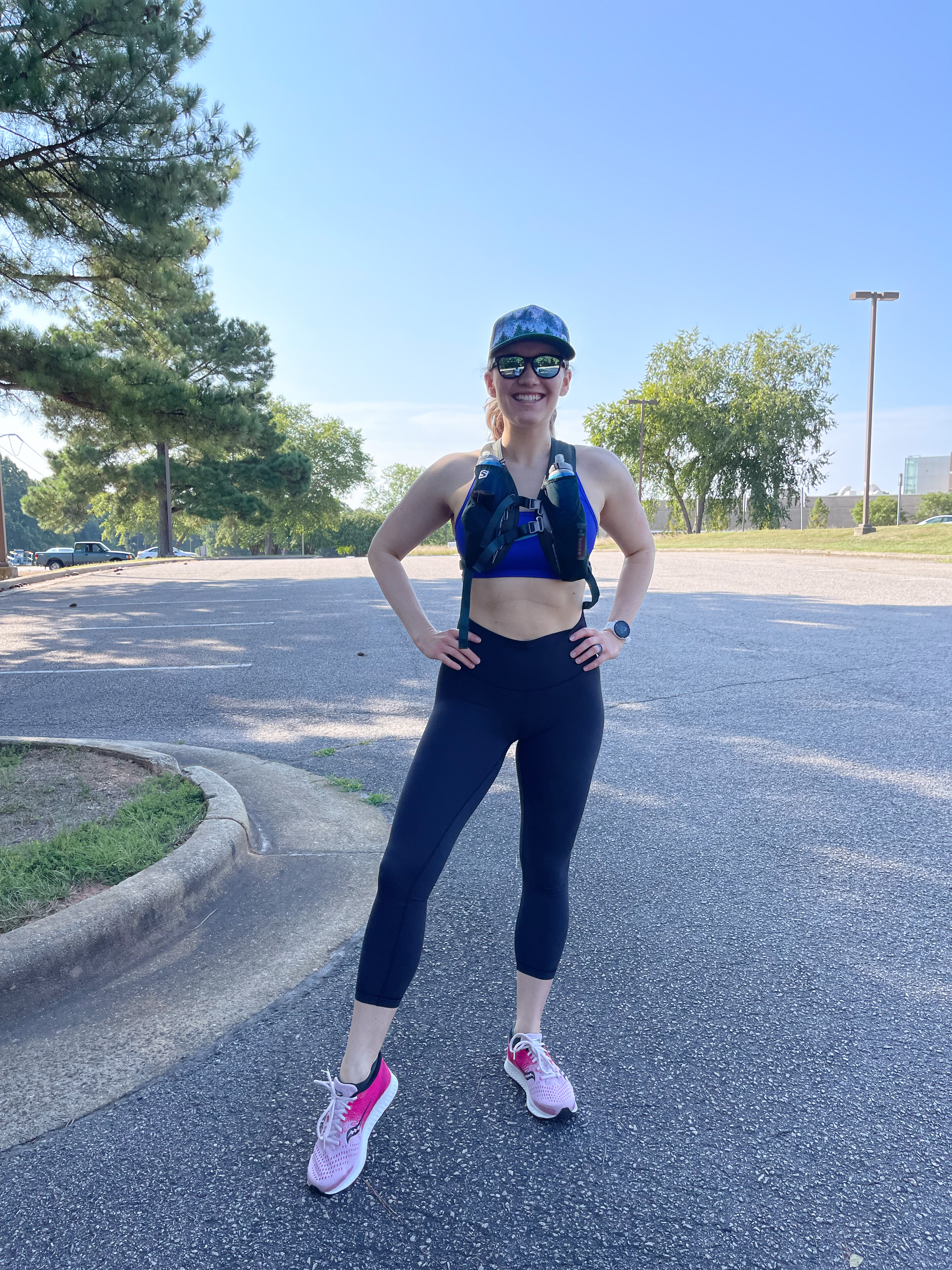By Michael Raynor, MS, RD, LDN

Heat and humidity can put a real damper on your training, making hard training sessions even harder and prolonging recovery. Many runners, cyclists, and triathletes even target fall races, in part, for cooler temperatures on race day. However, that often puts the bulk of your training in the hottest part of the year, so you still need to find ways to cope with the heat so that you can train your best. Workouts put stress on the body, and heat just adds additional stress on top of that, so it’s important to try and counteract the effects of heat during our workouts so that we can perform our best, get the most out of our workouts, and recover well.
The human body is really cool, no pun intended. In response to heat, our bodies start sweating (some of us more than others) to help shed heat through evaporative cooling–as the sweat evaporates off of our body, it takes some of our body heat with it. However, in some extremes of heat and humidity, when our sweat mechanisms can’t keep up, our core body temperature begins to rise and our bodies have to throttle back to keep from overheating. In simple terms, we have to slow down whether we want to or not. The more we sweat, the more fluid and electrolytes we lose, meaning we need to take more fluid and electrolytes in to keep from becoming dehydrated. As a result, our goals during those really hot and humid workouts are to keep our core body temperature from rising too much so that we can continue to work at a higher level, and to optimally replace fluid and electrolytes to prevent dehydration.
Dehydration is a major issue for a lot of endurance athletes. It can lead to increased thirst, increased heart rate, irritability, reduced performance and slowing of physical activity, muscle cramps, nausea, headache, dizziness, and at the extremes it can cause kidney failure. Obviously these are things we want to prevent. Dehydration is also something that can compound throughout the day and over the course of weeks. By not fully replacing what we lose, as far as fluid and electrolytes, and never fully rehydrating over the course of weeks of workouts, we slowly dig ourselves into a hole that hampers training and our health.
We can also reduce the demands (i.e. the amount of fluid and electrolytes we lose) by keeping our bodies cool so that we sweat less. We can help our bodies stay cooler a number of ways while we workout:
- First and simplest is working out during cooler parts of the day if possible–such as first thing in the morning or in the evening. This one’s fairly obvious, but if we can avoid the hottest parts of the day, we stay cooler and can help minimize the amount we sweat, making it easier to keep up with, and replace, what we lose.
- Another helpful strategy is to workout in shady areas/routes (greenways, parks, wooded neighborhoods) rather than in direct sunlight, if possible.
- In addition, lighter colored clothing, especially white clothing, may reflect more heat and play a small part in keeping you cooler.
- It’s also a good idea to wear a hat (not a visor) when running to help keep the sun off your face/head/neck.
- Another great strategy is to use ice and cool water to help keep your body temperature down. Ice can be placed under your hat, inside pockets, and anywhere else you have room for it to help keep you cool for as long as possible.
- Related to this tip, during the warmer months it’s a great idea to put ice in your drinks for during workouts, or even to freeze your bottles for your hottest workouts so that they stay cool longer into your workout.
- Finally, slow down. On those really hot days, plan to slow your paces and intensity a little bit to reduce the demands of the exercise. I know it doesn’t sound exciting but much of the gains that come from training are the result of consistency and good recovery, not a single training session. It’s better to “live to fight another day” than to dig yourself into a hole by overexerting yourself in an extremely hot and humid workout.
Not sure how to put these strategies into practice in your training? Want support creating a fueling plan that keeps you cool and hydrated? Head here to sign up for a FREE Get-To-Know-You (GTKY) call!

